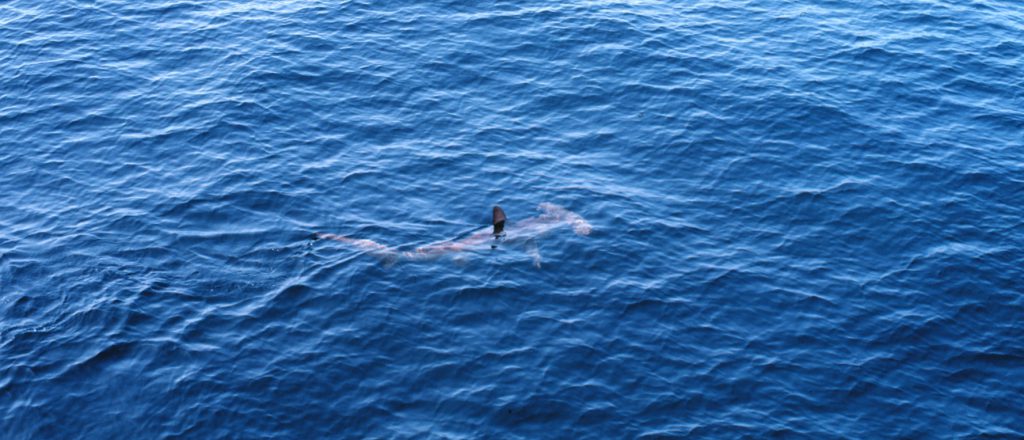FORT LAUDERDALE (USA)- Most of the 10 species of Hammerhead sharks are severely overfished worldwide for their fins and in need of urgent protection to prevent their extinction. To learn more about a declining hammerhead species that is data poor but in need of conservation efforts, a team of researchers from Nova Southeastern University’s (NSU) Save Our Seas Foundation Shark Research Center (SOSF SRC) and Guy Harvey Research Institute (GHRI), Fisher Finder Adventures, the University of Rhode Island and University of Oxford (UK), embarked on a study to determine the migration patterns of Smooth Hammerhead sharks (Sphyrna zygaena) in the western Atlantic Ocean.
This shark, which can grow up to 14-feet (400 cm), remains one of the least understood of the large hammerhead species because of the difficulty in reliably finding smooth hammerheads to allow scientific study.
To learn about smooth hammerhead behavior, the research team satellite tagged juvenile hammerhead sharks off the US Mid-Atlantic coast and then tracked the sharks for up to 15 months. The sharks were fitted with fin-mounted satellite tags that reported the sharks’ movements in near real time via a satellite link to the researchers.
Movement behaviours
“Getting long-term tracks was instrumental in identifying not only clear seasonal travel patterns, but importantly, also the times and areas where the sharks were resident in between their migrations,” said Ryan Logan, Ph.D. student at NSU’s GHRI and SOSF SRC, and first author of the newly published research on Science Daily. “This study provides the first high resolution, long term view of the movement behaviors and habitats used by smooth hammerhead sharks — key information for targeting specific areas and times for management action to help build back this depleted species.”
The researchers found that the sharks acted like snowbirds, migrating between two seasonally resident areas — in coastal waters off New York in the Summer and off North Carolina in the Winter. Their residency times in these two locations coincided with two environmental factors: warmer surface water temperatures and areas with high productivity — indicative of food rich areas.

The tracks of the smooth hammerheads (and other shark species) can be found here: http://www.ghritracking.org.
Read more at Science Daily.

